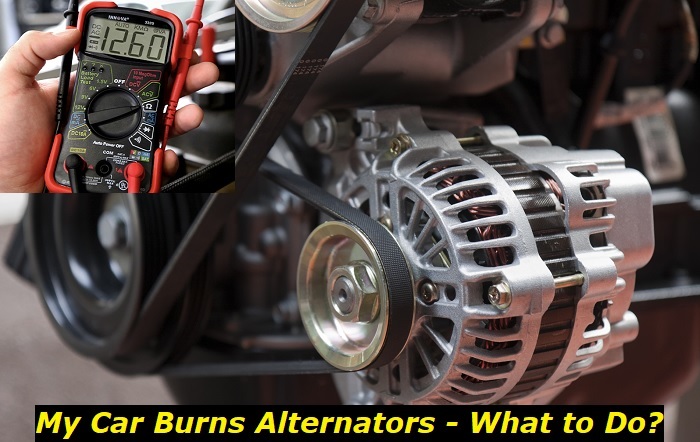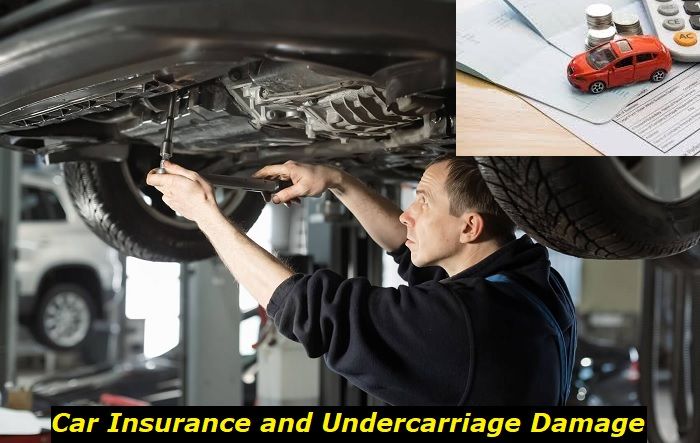So, you are cruising home from work and you turn the radio on for that feel-good music to relax as you normally do. Suddenly your check engine light flashes and you lose power, the engine roars, and everything halts as your car grinds to a screeching halt. It either has to be the battery or the alternator, but the battery is still new... try checking that alternator.
Electrical circuit problems highlights
- Level of urgency:high
- DIY inspection:possible but very complicated
- DIY repair:mostly impossible
- Can you drive?yes
- Price for repairs:$150 - $350
- Symptoms:all kinds of different symptoms with all possible equipment
- Ways to solve:diagnose wiring and connections, inspect electrical equipment

What Does It Mean When Your Car Burns Out the Alternator?
An alternator is the part of a car that is responsible for converting mechanical energy into electrical energy, which will be used to supply power to your car's electrical system. If the alternator is burning out, the car's electrical system could be overworking and is no longer powering the battery.
Signs to look out for include:
- Warning light - Some cars have the ability to show a warning light if there is an issue in the battery area, just like the way it shows when your fuel tank is low, your car can signal you if something is amiss in the battery area.
- Noises - When driving and you hear grinding noise coming from the bonnet, it could be a sign that bearings are coming out of the alternator. If you hear a squally noise, it signifies that the serpentine belt could be worn out, therefore, producing less traction to rotate the alternator.
- Headlight problems - When you happen to drive at night and notice that your headlights are dim or getting flickering as you move, it could signify that your car is not producing enough electrical energy required to produce bright light for your headlights.
- Engine stalling - You are going down to the grocery store and your car suddenly comes to a halt and you are left wondering what just happened, this could be a sign. When you reignite, it starts up, as if nothing happened, and it gives you a chance to go to the grocery store. For a car to run, you need, air spark and fuel, if you have an issue with the alternator, it will not produce fuel and spark, because they come from electricity from the alternator that charges the battery, your car will not run.
- Accessory failure - If you notice some funny issues from your multiple accessories like the A/C fan not cooling the air enough, your radio switching itself off and on, or your power windows rolling really slowly, it is a good indicator to have the alternator checked.
- Dead battery - Anytime you are going to start up the car and all you hear is rapid clicking and your car is not starting up unless you jump start it, the first thing that comes to mind is the battery, but it happens to be that you change the battery, and it still does not start up, this is a sure sign to go change the alternator.
Troubleshooting and Common Causes
You can check to see if your car is burning out the alternator by checking your car's voltage and current.
Voltage: If the voltage is below 8 volts, then your car is not receiving the charge it needs to be able to power itself up and therefore likely to be burning out the alternator. If the voltage is above 14 volts, some problems with electric modules are there. If your car has low voltage, the alternator is not charging and the battery is draining, if it is still running, you can try keeping the electrical system running by disconnecting everything that is not necessary.
Current: If the current is above 10 amps, then the car is receiving too much charge that can be burning out the alternator. If the current is below 4 amps, then the car is receiving too little charge and is also burning out the alternator.
- Faulty Starter or Solenoid Coil
A starter is a device that is used to crank the engine when the ignition is turned on. A starter uses sparks to create enough voltage to pull in the engine. The starter solenoid is a mechanism that is used to engage the starter.
A solenoid might be faulty and not sending enough voltage to the starter. This can cause the starter to burn out. If you have a voltmeter, you can check if the starter is getting enough voltage to do its job. You can check the voltage on the starter solenoid.
A reading of around 12 volts when the engine is cranking (not just idling) means that the starter is getting enough voltage. If it is below 12 volts, the starter solenoid might be faulty and not send enough voltage to the starter.
- Bad Engine Control Module (ECM)
An engine control module (ECM) is a system that uses sensors to measure important engine parameters and then uses actuators to control engine operation. An ECM can be faulty and not send the correct voltage to the starter or alternator.
This can cause the starter or alternator to burn out. A voltmeter can be used to check if the ECM is sending the correct voltage to the starter or alternator. If the voltage is not correct, then the ECM might be faulty and cause the starter or alternator to burn out.
- Leaky Intake Manifold Gasket
The intake manifold is a part of the car that is used to route air into the engine. An intake manifold gasket is a seal that is used to seal the intake manifold to other parts of the car. An intake manifold gasket leak can cause a vacuum leak, which results in a low voltage. This low voltage can cause the alternator to burn out.
If you have a voltmeter, you can check the voltage at the intake manifold to see if there is a vacuum leak. If the voltage is below 8 volts, then there is most likely a vacuum leak, which causes a low voltage.
- Excessive Carbon Build-Up in the Combustion Chamber
The engine combustion chamber is the space inside the engine where fuel is ignited to create energy. An engine with a lot of carbon buildup may not be able to ignite the fuel properly, which can cause a low voltage.
This low voltage can cause the alternator to burn out. If you have a voltmeter, you can check the voltage at the spark plug terminals to see if there is a low voltage. If the voltage is below 8 volts, then there might be excessive carbon buildup in the combustion chamber.
Alternator Replacement: How to do it by yourself?
There are several ways to fix your car when it is burning out the alternator like replacing the serpentine belt or aligning ball bearings in the alternator, but the most common way is to replace the alternator.
You can do this repair as a do-it-yourself project as long as you have the right tools and follow the right steps. First, locate the alternator. It is usually behind the engine on the front of the vehicle. If it is not behind the engine, you can use a voltmeter to find it. Disconnect the wiring and remove the mounting bolts.
Remove the old alternator and install the new one. Reconnect the wiring and make sure everything is secure. Now, you just need to get your car to a mechanic to have the charging system tested and re-certified.
Of course, it sounds easier than it is. So, we still recommend finding a specialist who will do it for you.
Conclusion
The alternator is an important part of the engine that helps to keep it running properly and optimally by supplying the necessary voltage. This can be a challenging issue to tackle as there are so many different things that could be causing this problem. Whether it is something simple like a loose wire or something more serious like burnt wires. It is very important to check your charging system to make sure there are no problems.
Make sure that you check the car's battery. A battery is a device that stores electrical energy so that your car can access power on demand. If the battery is old and/or not properly maintained, it is more likely to fail when you need it the most. When the alternator burns out, it is the battery's job to keep things going until you get to the mechanic. A battery that is too old or too damaged might not be able to perform this task.
If you have a voltmeter, you can check the state of charge of your battery to see if it is old and dying or if it is otherwise low in charge. If the battery is new, fully charged, and properly maintained, it should read between 12.8 and 12.9 volts. If the battery has a low charge, it might read below 12.8 volts. If the battery is old, it might read below 12.8 volts even when fully charged.
You need to get the car to a mechanic as soon as possible. We hope that this article will be of help as you plan to work on your alternator.
About the authors
The CarAraC research team is composed of seasoned auto mechanics and automotive industry professionals, including individuals with advanced degrees and certifications in their field. Our team members boast prestigious credentials, reflecting their extensive knowledge and skills. These qualifications include: IMI: Institute of the Motor Industry, ASE-Certified Master Automobile Technicians; Coventry University, Graduate of MA in Automotive Journalism; Politecnico di Torino, Italy, MS Automotive Engineering; Ss. Cyril and Methodius University in Skopje, Mechanical University in Skopje; TOC Automotive College; DHA Suffa University, Department of Mechanical Engineering






Add comment